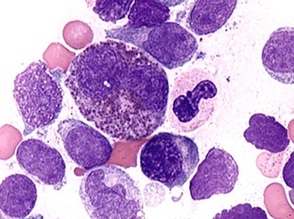Detecting cancer early is believed to be one of the best routes to improve survival rates. That's why researchers all over the world are looking for new accurate and early screening methods.
Now a new way to detect blood cancers such as leukemia and lymphoma while in their pre-cancerous states has been developed by researchers from MIT and Harvard. The test is not yet approved for patients, but it may mean that, in the future, people can be screened for a tendency to develop these cancers, and then monitored and treated as needed.People with the mutations were more than ten times likelier to develop a blood cancer in subsequent years compared to those who lacked them.
The work used roughly 29,000 samples and found that some of the mutations linked to blood cancers were also linked to other medical conditions including type 2 diabetes and cardiovascular disease. The collaborative endeavor highlights the value of creative science and large-scale data sharing.People under 40 rarely show a pre-cancerous state. However, as they get older, it begins to show up.
Researchers identified three genes that were most commonly mutated in these pre-cancerous individuals. They found men were more likely to have these mutations than women, and that Hispanics were slightly less likely to have these mutations compared to other racial groups.
The scientists caution that, as of today, there is no clinical benefit for testing for this pre-cancerous state because no treatments are currently approved for use in people with the mutations. However, they agree that the findings pave the way toward early detection and prevention in the fight against blood cancers.
The ability to identify high-risk individuals will be of major benefit in blood cancer clinical trials. Pharmaceutical companies can now begin to develop drugs that target these pre-cancerous states in order to modify disease progression and prevent cancer.
The Harvard and MIT studies are published in the New England Journal of Medicine.





